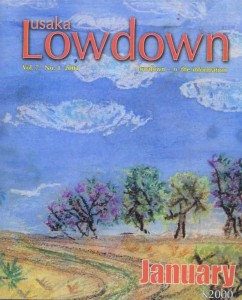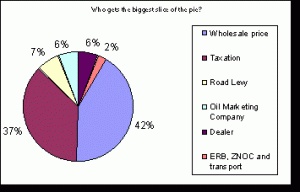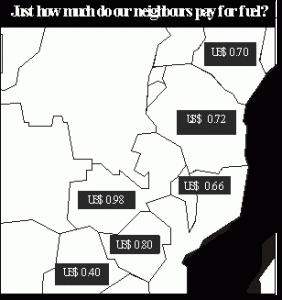 Motorists throughout Zambia are still reeling from the sudden increases in the cost of fuel, both petrol and diesel, and the domino effect throughout the entire Zambian economy. Confusion abounds about the reason for this – is it because the fuel is being imported as a finished product rather than being refined at Indeni, is it taxation, is it the road levy, is it because of the depreciating Kwacha? In an attempt to gain some understanding of the fuel pricing structure, we attended a workshop, arranged by the Chartered Institute of Management Accountants, on petroleum pricing and also carried out some additional research. The result was that we were more confused than when we started, but here it is.
Motorists throughout Zambia are still reeling from the sudden increases in the cost of fuel, both petrol and diesel, and the domino effect throughout the entire Zambian economy. Confusion abounds about the reason for this – is it because the fuel is being imported as a finished product rather than being refined at Indeni, is it taxation, is it the road levy, is it because of the depreciating Kwacha? In an attempt to gain some understanding of the fuel pricing structure, we attended a workshop, arranged by the Chartered Institute of Management Accountants, on petroleum pricing and also carried out some additional research. The result was that we were more confused than when we started, but here it is.
When Indeni is operating, the supply chain of the finished product starts with importation of the crude product, which arrives in Dar Es Salaam, by ship, from the country of supply. This is offloaded at the single point mooring facility which is owned and operated by Tanzania Harbour Authority (THA). The crude product is pumped from the ship directly into the Tazama oil pipeline. THA is paid a flat fee per tonne for use of the facility. The level of this fee was not made available. What we can say, though, is that during a recent discussion with a senior official of THA we were told that if a shipper phoned him and asked for a price to use their facilities for the movement of say 50,000 tonnes of cargo, he would first have to do his own calculations. These would then be submitted to a pricing committee, who would in turn make their own recommendations. They would then have to wait for the next meeting of the Board of Directors of THA, who would then approve the price to be charged, by which time the shipper has sent his goods elsewhere. This is an indication of bureaucracy at the Port, which surely translates into increased costs throughout the supply chain and will definitely have an effect on our fuel price. Tazama is paid a flat fee for pumping the crude product. This flat fee was also not made available. In addition, a factor of 0.8% is allowed for losses in the pipeline.
After passing through Tazama, the crude product reaches Indeni, who are also paid a flat fee for refining the crude product and I need not add, that this flat fee was also not made available. A factor of 6.5% is allowed for internal consumption (product that is used in the refining process) and losses at Indeni. What has helped to confuse the issues (in my mind, at least) is that Indeni cannot process raw crude, but imports what is called ‘co-mingled crude’, a product that has already had gasoil, kerosene and condensers added to it. Try as we might, we have not been able to verify exactly what co-mingled crude is and what it costs on the world market. What is interesting however, is that a barrel of 42 gallons of crude oil results in a processing gain of 2.2 gallons, an additional 5.3% volume. The question is whether a factor of 6.5% for internal consumption and losses is reasonable or not?
After refining, fuel is then handled by Zambia National Oil Company (ZNOC), who are also paid a terminal fee at a flat rate per litre for this, which is between 0.16% and 0.25%, depending on the product. Based on annual fuel sales and the current cost of fuel, ZNOC’s annual income would be in the region of K 2.06 billion or K 4 per litre of fuel. Whether this is a reasonable income or not can only be ascertained after a thorough look at their functions, staffing levels etc. The main duty of ZNOC is to arrange for the procurement of crude oil and to store and distribute the fuel after it has been refined, so, in theory, they should only require a minimal number of staff. On the bright side, a decision has been made to open up the procurement process meaning that ZNOC will no longer be the only company involved in the importation of feedstock. Implementation has not yet commenced, as a mechanism is being worked out to ensure that security of supply is not compromised and that quality of product is maintained.
From ZNOC, the fuel is then handled by the oil marketing companies, who arrange for the transportation of the fuel to the gas stations. The amount included in the price build-up for transport is K 0.23 per litre, for each kilometre transported. Thus for fuel in Lusaka, the transport factor is K 72.15 per litre regardless of which product it is. The question which must be asked, of course, is whether the transporters are paid this amount or whether they receive less than the stipulated amount. When I phoned my friendly fuel transporter for an answer to this, he was away, so I couldn’t get a definite answer, but I do know that a few years ago, the oil marketing companies were allocated K 115 for transport, but only paid the transporters K 90. The oil marketing companies are allowed a mark up of between five and seven percent. Currently, they get K 207 and K193.20 for each litre of petrol and diesel respectively.
Next in line are the gas stations, who also have a mark up of between five and seven percent or K 207 and K 165.60 for petrol and diesel respectively. Included in the expenses of the gas stations are salaries for attendants and rentals to the oil marketing companies for the premises which the retailers occupy. Finally, the fuel reaches our tanks.
But, this is not all. What about the other items which are included in the fuel price. First, there is duty on the product that is imported. Duty rates are 5 percent on crude products and 25% on finished products. With Indeni being out of commission, I understand that Government reduced the duty rate to 5% to give some relief, not only to the consumer, but more importantly to industry. The next addition is excise duty at 45%, which is K 694.43 for each litre of petrol and K 704.21 for each litre of diesel. As a percentage of the pump price, excise duties equate to 19.91 percent on petrol and 20.34 percent on diesel. After this is the road levy, which is 15% of the wholesale price of fuel or K 231.47 and K 234.73 per litre for petrol and diesel respectively, or 6.64 percent and 6.78 percent of the pump price. When one considers the importance of maintenance of the road network (for each Kwacha spent on maintaining roads, vehicle operating costs are reduced by between K 3 and K 4), one needs to ask whether it is equitable for the oil marketing companies and the retailers to have the same income per litre as the income which accrues to the roads. Next up is the Energy Regulation Board who receive a fixed fee of K5 per litre, roughly equivalent to K 2,5 billion per annum and this is only from the fuel sector. They also have an income from licencing fuel transporters and I am sure, from the electricity and water sectors. Finally, the last thing to be added is Vat at 17.5% or K 519.24 for petrol and K 515.59 for diesel, in Lusaka.
The above brings to light a number of anomalies, but there are more. For instance, what is included in the wholesale price of crude? How much does it cost us directly from the supplier? How much does each of the players (THA, Tazama, Indeni and ZNOC) make along the way and are Tazama, Indeni and ZNOC, as three separate entities necessary? Could their functions not be carried out by one organisation and the cost saving passed on to the motorist? Is the current procurement system through ZNOC efficient and transparent? Whilst it is a well known fact that fuel is one of the easiest items to tax, for a landlocked, developing country with very little rail infrastructure, is it the best system of taxation or is it stifling the development of our economy? Taking into account that Indeni is an old refinery and too small to benefit from the economies of scale, should we even consider refining our own fuel or should we be looking at alternative ways of getting it? Even as we write this article, Indeni still seems to be an on-off affair and all the while, the World Bank are pressing for the closure of a number of smaller refineries (Indeni included) in sub-Saharan Africa or for them to be converted to storage facilities.
Unfortunately, all the facts and figures (although there weren’t that many available) supplied at the workshop were based on Indeni being operational. No information was available on what the situation was then, with fuel being imported as a finished product, by road, from South Africa. If these had been available, comparisons could have been made, conclusions drawn and possible solutions found. But when only part of the information is available, it is inevitable that the wrong conclusions are drawn and it is only through stakeholders having full access to all the information, that we will be able to find a solution to the problem of escalating fuel costs.


Leave a Reply
You must be logged in to post a comment.